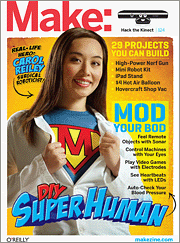
Slap Shot to the Moon
By Rachel Hobson
Photograph by Adam Lisowski
When Jeff Stone and his wife, Susan, decided to build a telescope, run-of-the-mill building materials just wouldn’t do.

“Most of them are leftovers from broken ones my wife collected over the years,” Stone explains. “There are a couple of special ones that were used by players from the Houston Aeros of the late 1970s, including Mark Howe, one of Gordie Howe’s sons.”
Stone had always wanted a telescope and had even thought about building one. After he and his wife met a group of amateur astronomers on a trip with the Johnson Space Center Astronomical Society, they realized handmade telescopes were well within their skill set and decided to make one themselves.
“The project was very intense, especially the mirror-making part,” he notes.
Stone worked in the space shuttle division of the Mission Control Center at Johnson Space Center, and would take the telescope in to share with his co-workers.
“During shuttle flights, there’s a short time every orbit that we lose communications with the vehicle, so the controllers take a quick break,” he says. “I’d leave the scope on the sidewalk outside so we could run down to have a quick look at the moon, maybe a planet or two, or a bright double star if we were lucky.”
Stone says he’s made many friends and has had lots of interesting conversations thanks to the telescope. “Building it, especially out of hockey sticks, is one of the most rewarding things I’ve ever done.”
Above is an excerpt from MAKE Volume 29.
More about the issue:
We have the technology (to quote The Six Million Dollar Man), but commercial tools for exploring, assisting, and augmenting our bodies really can approach a price tag of $6 million. Medical and assistive tech manufacturers must pay not just for R&D, but for expensive clinical trials, regulatory compliance, and liability — and doesn’t help with low pricing that these devices are typically paid for through insurance, rather than purchased directly. But many gadgets that restore people’s abilities or enable new “superpowers” are surprisingly easy to make, and for tiny fractions of the costs of off-the-shelf equivalents. MAKE Volume 29, the “DIY Superhuman” issue, explains how.
ADVERTISEMENT







